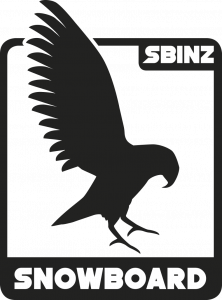Effective Presentation explores the building of relationships and interacting with guests, a variety of different styles in which you can teach your students, and some important considerations for the feedback process. We will also look at the more advanced technique of question-based learning.
Pacing of Information
Delivering information and feedback verbally at a rate where students can easily understand and process the new information is key. To do this effectively, the instructor should consider how much what-why-how information the student needs, while allowing plenty of time for them to practice. The right amount of information, and when to deliver it, will often vary depending on things like the students age, group size, knowledge, ability, terrain, and task.
How much is too much?
It is very common for new, or less experienced instructors, to want to share all of the information they have gained about how to snowboard. While this motivation to share everything all at once genuinely comes from a good place, it can actually inhibit the learning process through an overloading of information.
If students show a lack of understanding, confusion, frustration, or boredom, it can often be attributed to the pacing of information. Too much information may make it confusing or boring for the students as they listen to their instructor talk about how to do a task with unnecessary detail or repetition. On the other hand, very limited information may lead to frustration due to not understanding how to achieve or do something.
For an instructor to learn how much information they need to deliver and when to deliver it, self-reflection is a valuable tool. Ask questions like:
Breaking it Down
Progressions and tasks are designed to help the instructor to pace their information effectively. An experienced instructor knows that it can be useful to break things down to help focus on a specific movement or board performance. This can be a very effective way to pace or separate the information into smaller segments that are easier for the student to understand and apply.
Example
“We are going to work on increasing our speed, and focus on what it’s like to get the board on a higher edge at the end of the turn. Let's try working on this by gently moving our hips a bit further uphill as we traverse across the hill and see if the board makes a thinner track in the snow.
– practice time provided –
“Now let's see if we can add a progressive flexing of the ankles and knees on the toeside and knees and hips on the heelside as we move our hips a little further and lean a touch more. You will probably notice your speed increases too.”
– practice time provided –
“Next, let’s focus on feeling the shins pressing into the tongues of the boots on the toeside, and the backs of our legs pressing into the highbacks on the heelside. This should help to increase how high the edge gets and make the track thinner and more edged.”
This example highlights how to change the pacing of information from a single, quite detailed task, to be spread over several mini, simpler tasks. Notice how the AAA model is used to adjust and add layers of information to make it easier for the student to understand and apply. While it is not always necessary to break tasks down this much, it can help in spreading the information into more digestible pieces. Another approach is to give some information before they attempt the task and some after.
It is important to allow plenty of mileage and ride time between each new piece of information. Furthermore, allowing time for the students to discuss the new information and ask questions is also an important aspect of pacing information. This can be done before or after a student has attempted the task, however waiting until they have attempted the task before opening discussion, can allow for a more meaningful exchange as they will have a better understanding of the task.


